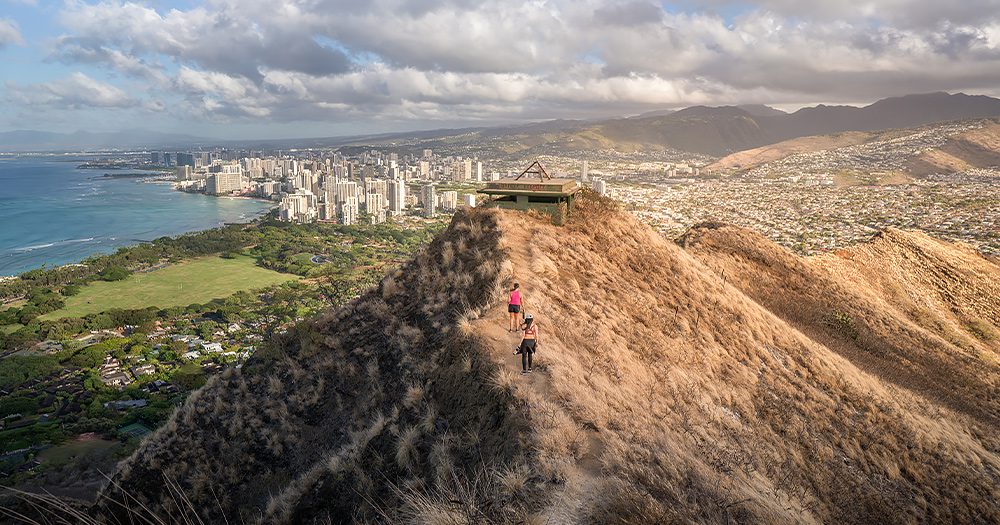Beginning May 12, all visitors who are not Hawaii residents will need to obtain and pay for a reservation to enter the park and access Diamond Head State Monument or Lē’ahi, as it’s known to natives.
Much like Venice’s recent announcement, the state of Hawaii is also taking additional steps to protect one of its most iconic and popular tourist and instafave destinations – Diamond Head State Monument.
Prior to the pandemic, it’s estimated that 1.2 million people annually visited the monument on the Hawaiian island of Oahu, which led to frequent overcrowding and a negative impact on the national park’s flora and fauna.
The new system has been designed to help manage the increasing number of visitors while still allowing everyone to enjoy the natural beauty and history of the area.
“The new reservation system will mitigate environmental impacts sustained by foot traffic, reduce vehicle congestion in the park and surrounding neighbourhoods, improve the experience of kamaʻāina and visitors enjoying the monument,” said a national parks spokesperson.
“We commend DLNR for bringing this reservation system to fruition, to support the efforts to manage the flow of visitors and residents into Diamond Head State Monument, and make the experience more enjoyable for all,” said Noelani Schilling-Wheeler, executive director of the O’ahu Visitors Bureau.
The unique profile of Diamond Head (Lē‘ahi) sits prominently near the eastern edge of Waikiki’s coastline. Hawaii’s most recognised landmark is known for its historic hiking trail, and stunning coastal views, which was formed about 300,000 years ago during a single, explosive eruption.
Diamond Head State Monument encompasses over 475 acres, including the interior and outer slopes of the crater.
How does the new system work and how much does it cost?
The new system is scheduled to activate on Thursday, April 28, and will allow for reservations beginning 14 days ahead – so get in early if you’re heading over.
As of May 12, anyone without a Hawaii driver’s license or ID must have secured a reservation to enter the park. State residents will have free access without reservations, but entry may depend on whether there are any parking spaces left.
The entry fee will be US$5 (AUD$7) per person over the age of 3 with parking for non-commercial vehicles being US$10 (AUD$14).
This will be the third state park in Hawaii to require reservations with Hā’ena State Park on Kaua’i and Waiʻānapanapa State Park on Maui being the previous two.
To find out more, head to dlnr.hawaii.gov/dsp






